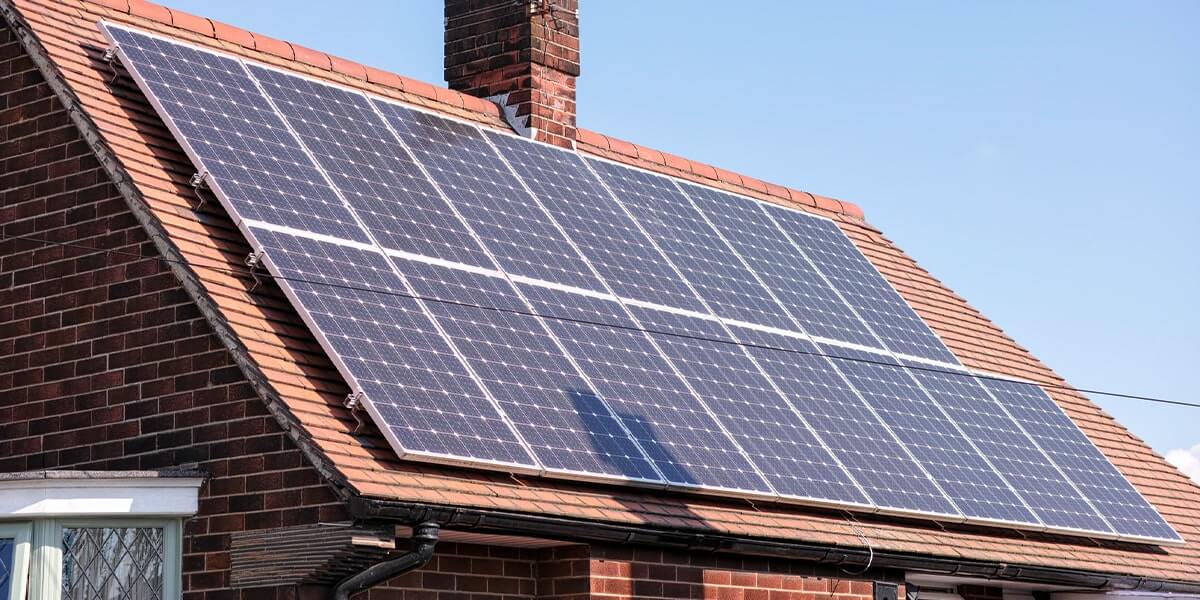Have you ever asked yourself, “What’s the payback period for solar panels on a home?” Imagine slashing your energy bills while boosting your home’s eco credentials; sounds appealing, right? Many homeowners share the same challenge with weighing upfront costs of solar power for homes against long-term gains.
That’s exactly what we will explore here; what the “payback period” means, why it matters, and how it can vary in the UK. For instance, according to recent figures from Solar Together, solar payback in the UK now falls between five and ten years.
We’ll also explain how our expert solar panel installation and advice at SESC Solar Service helps guide you towards confident, cost‑effective decisions.
What is the Payback Period?
The payback period is simply the time it takes for your solar panel system to save or earn back the money you invested upfront. In practical terms, you total the cost of installation, then track how long it takes for your reduced energy bills, and any payments from exporting excess power, to equal that amount.
This figure is crucial when deciding whether solar is right for your home. A shorter payback period means you’ll begin enjoying real financial returns sooner, making the initial outlay more worthwhile.
At current UK energy prices, most homeowners see a payback period between five and ten years, though depending on location and usage, it can extend to around twelve.
Once you’ve reached that break-even point, your panels effectively provide free electricity. With the average solar panel lifespan ranging from 25 to 30 years, you could benefit from an extra 15 to 20 years of clean, cost-free energy.
That’s a strong long-term saving, especially with rising grid prices. Understanding your payback period helps you measure those benefits clearly. It also sets realistic expectations, allowing you to match your solar investment with your home’s energy needs and future plans.
You can read more in our blog post about how long solar panels take to pay for themselves.
Factors Affecting Payback Period
Of course, the payback period varies from property to property, and the time it’ll take you personally will depend on the factors involved. So, when asking the question, “What’s the payback period for solar panels on a home?”, consider these variables:
- Initial solar panel installation cost, including available grants or incentives like zero‑rated VAT
- Size and efficiency of the solar panel system – bigger and more efficient panels produce more
- Energy consumption habits of the household – the more power you use during daylight, the better
- Local electricity prices and tariffs – higher rates shorten payback
- Availability of government schemes, such as the Smart Export Guarantee, which pays you to export excess energy
- Maintenance costs and system lifespan – solar panel maintenance and occasional part replacement factor in
Each household’s situation is unique. The cost of solar panels varies depending on your roof, system size, and installers, and households that export extra energy also benefit from the SEG scheme. Plus, keeping panels clean and well‑maintained helps maximise output over the solar panel lifespan, improving returns.
How to Calculate Your Solar Panel Payback Period
Calculating your payback period is straightforward. You divide the initial cost of solar panel installation by your expected annual savings. This includes both reduced electricity bills and earnings from exporting surplus energy.
In the form of an equation, it looks something like this:
Initial Cost ÷ Annual Savings = Payback Period
For example, a £7,000 system saving £700 a year gives a ten‑year payback.
Here at SESC Solar Service, we go beyond estimates. We provide a personalised payback period based on your home’s energy use, roof orientation, and local electricity tariffs, so you get a realistic picture. Our simple yet thorough approach ensures you know when your panels will start paying you back, helping you decide with confidence.
Benefits Beyond the Payback Period
Installing residential solar panels delivers far more than just reaching break‑even. Once the payback period is over, you enjoy:
- Significant savings after payback period, since the electricity you generate costs almost nothing
- Environmental benefits by reducing your carbon footprint with clean, renewable energy
- Potential increase in property value, with studies showing solar systems can raise home prices by up to 25 %
- Energy independence, giving you protection against rising energy prices and unstable tariffs
Even after recouping the upfront cost, your system will keep generating electricity for another decade or two. That means ongoing solar energy savings without additional investment. Plus, with rising household energy use, especially from EV charging or homeworking, self-generated power becomes even more valuable.
Finally, solar panels demonstrate your commitment to sustainability, which boosts peace of mind and community respect.
Ready to Discover Your Solar Panel Payback Period?
So, now we’ve answered the question, “What’s the payback period for solar panels on a home?”, if you’re ready to explore the solar panel payback period and make smart energy decisions, we’re here to help.
At SESC Solar Service, we’ve delivered over 5,000 installations and vouch for our work with a lifetime warranty. We guarantee to beat any written quote and are MCS‑certified and NICEIC registered.
Call us on 01747 445 509 or fill in our contact form today. We’ll offer a free consultation, help you estimate your payback period, assess solar energy savings, and ensure confident installation of solar power for homes. Let’s start creating a greener, more affordable future together.
Book Your Free Survey!
To find out how much we can help you save on your energy bills with a bespoke solar solution, contact our expert team!

